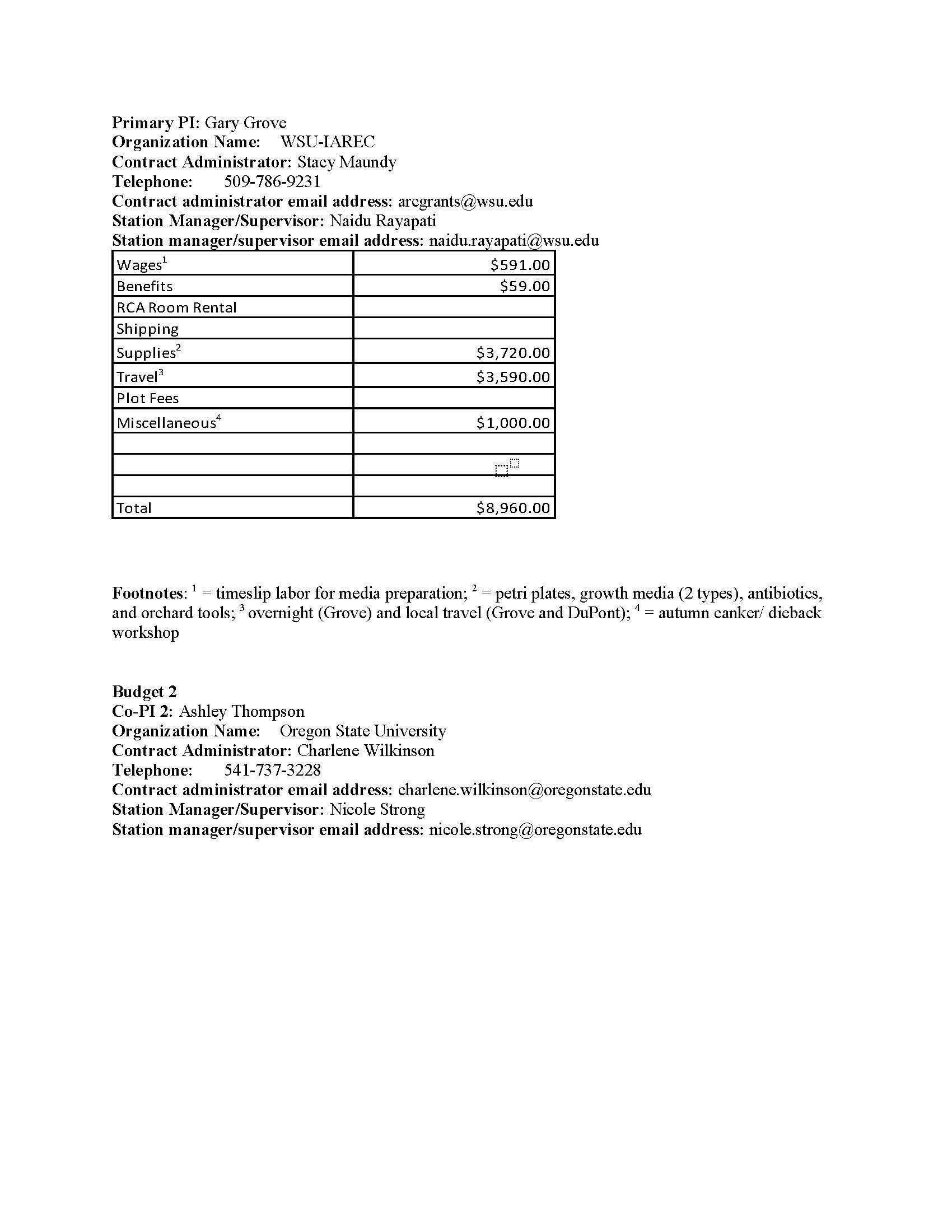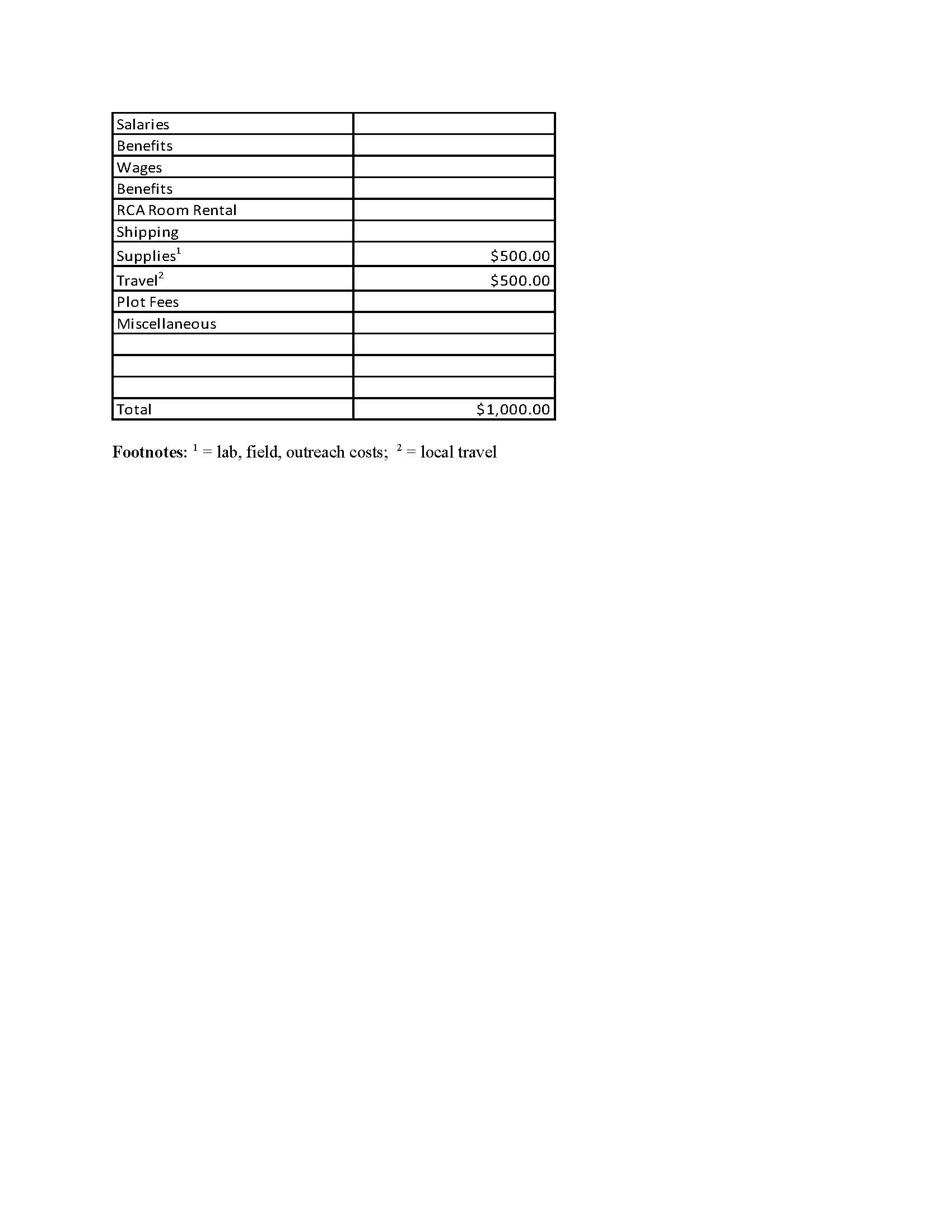Etiology of Cherry Cankers and Dieback in the Pacific Northwest
Author: Gary Grove
Published: 2025
Summary: A total of 86 orchards were sampled (70 in 2023, 16 in 2024) for wood dieback/cankers of unknown (bacterial canker was not identified as the primary pathogen prior to the orchard visit) etiology. Tissue samples were taken from the edges of cankers using a sterile razor blade, surface-disinfested using either sodium hypochlorite or ethanol / brief exposure to flame and placed on potato dextrose agar amened with tetracycline and lactic acid. Pure cultures of putative isolates were obtained by taking hyphae from the edges of fungal cultures and transferred to fresh PDA or malt agar plates. Colony morphology and the presence/morphology of fungal fruiting bodies and spore size/morphology were used to identify isolates. Leucostoma (=Cytospora) was isolated from samples taken from 47.7% of orchards sampled. Eutypa, Calorphaeria, and Botryosphaeria were isolated from samples taken from 9.3%, 11.6%, and 2.4% of orchards, respectively. Calosphaeria was the primary fungal pathogen isolated from Oregon orchards (9.3% of the aforementioned 11.6% of total orchards). Mixed infections were detected in 16.3% of the orchards sampled. Leucostoma and bacterial cankers were the most common. Numerous other fungi were isolated during the course of the study but their pathogenicity to cherry remains unclear; they are most likely saprophytic organisms common in diseased wood tissue. The epidemiology of Eutypa and Calosphaeria in the context of our regional climate and cultural practices needs further study.
Keywords:










